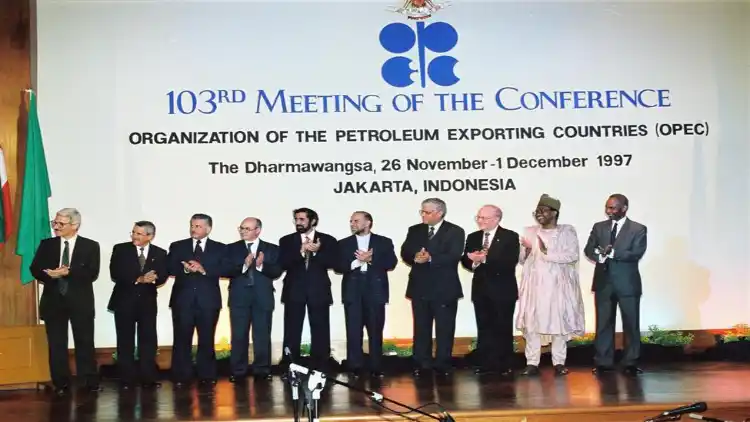
 Sushma Ramachandran
Sushma Ramachandran
Oil prices have spurted yet again over the past month. It’s a worrying scenario for India which imports over 80 per cent of its needs. The result is going to be a spike in the crude oil import bill, not just because of higher prices but also increased consumption. In the last fiscal, global prices fell due to the Covid virus and the domestic demand also dipped due to the economic slowdown. This led to a dramatically low import bill of about 63 billion dollars as against 101 billion dollars in the previous year. The outlook is not so bright this year. But much will depend on whether the hardening trend in oil markets continues over the next six months.
Currently, prices of the benchmark Brent crude are ruling at about 75 dollars per barrel while crude oil produced in the U.S., known as West Texas Intermediate crude is at 73 dollars per barrel. This is far higher than 2020 when prices stayed at an average of 45 dollars per barrel. The market had even crashed in April last year to about 19 dollars following a collapse in demand after the onset of the pandemic.
The situation has reversed since January when buoyed by rising demand, prices began to firm up. The rising trend was contained after a few months partly due to the second Covid surge in many parts of the world. But largely it was due to differences within the oil cartel OPEC and its allies led by Russia, the grouping now known as OPEC Plus.
These differences, between Saudi Arabia and the UAE were ironed out last month and the cartel agreed to raise output from August. But the increased availability is not likely to stem prices immediately as global demand has risen steeply while inventories have also been drawn down.
The question now is, will global oil prices continue to rise or will there be a reversal of the trend in coming months. One of the factors that could lead to softening of prices is the sudden worldwide rise in Covid 19 cases. Despite widespread vaccinations especially in developed countries, the number of infections is showing a rapid uptrend. For instance, there has been a surge in new cases in the U.S. which has now topped the list of countries in daily infections.
Similarly, the demand for crude oil in the U.S. and Europe appears to have reached a plateau. Pre-Covid demand levels are now not expected to be reached till 2022. In this context, it looks as if the upside for oil is limited right now.
In the short run, however, India is already feeling the pain with the oil import bill for the first quarter of the current fiscal (April to June) having reached 24.7 billion dollars, a clear indication that imports will cost over 100 billion dollars this year. Much-needed diplomatic initiatives are now being taken to try and ease the commercial terms and conditions for oil purchases.
In a bid to bring about greater predictability and calm in global oil markets, the new Petroleum Minister Hardeep Puri is reported to have reached out to OPEC members like Qatar, the UAE and Saudi Arabia. One of the key proposals made to the oil-exporting countries has been to extend the credit timeline for oil payment from the existing 30-day limit. Whether this is accepted or not, it is essential to continue a dialogue with OPEC members especially India’s major suppliers in West Asia.
Meanwhile, high international prices are having their fall out on the domestic market. Retail prices of petroleum products are rising to astronomical levels but this is not just due to the pass-through effect of world prices. Excise duties have been hiked repeatedly since last year to take advantage of the lower global prices. The higher excise duties did not have an impact on pump prices at the time as international prices were on a downward trend. But now the combined effect of taxes and soaring global prices has meant that consumers have to bear the burden of record highs in fuel prices.
The retail price hikes have also had a cascading inflationary impact on the economy. Consumer inflation in June this year was 6.26 per cent, the second month when it has been above the six per cent mark. Wholesale price inflation was even higher at 12 per cent. Most of the inflationary pressures are due to rising costs of food and fuel. As far as fuel is concerned, it is clear the government is prepared to weather higher inflation in order to reap the benefits of increased revenues to the exchequer. The chief economic advisor, Krishnamurthy Subramaniam has pointed out in an interview that taxes in this country are comparable to those of several European nations and are not unduly high. In other words, there is little likelihood of a rollback of excise duties.
Yet it would still be in the government’s interest to reduce taxes on petrol, diesel and LPG even if marginally in order to give some relief to the common man. The high cost of petroleum products has come at a time when the job losses are at their height. Household incomes, both in urban and rural areas, have taken a hit due to the economic costs of Covid. The recurring hikes in LPG prices are also counter-productive as these could lead to a return from this clean fuel to earlier polluting and harmful cooking fuels. The central government needs to avoid taking a completely revenue-oriented approach to taxation on petroleum products . It is time to be more compassionate and reduce fuel taxes to give some badly-needed relief to consumers.
